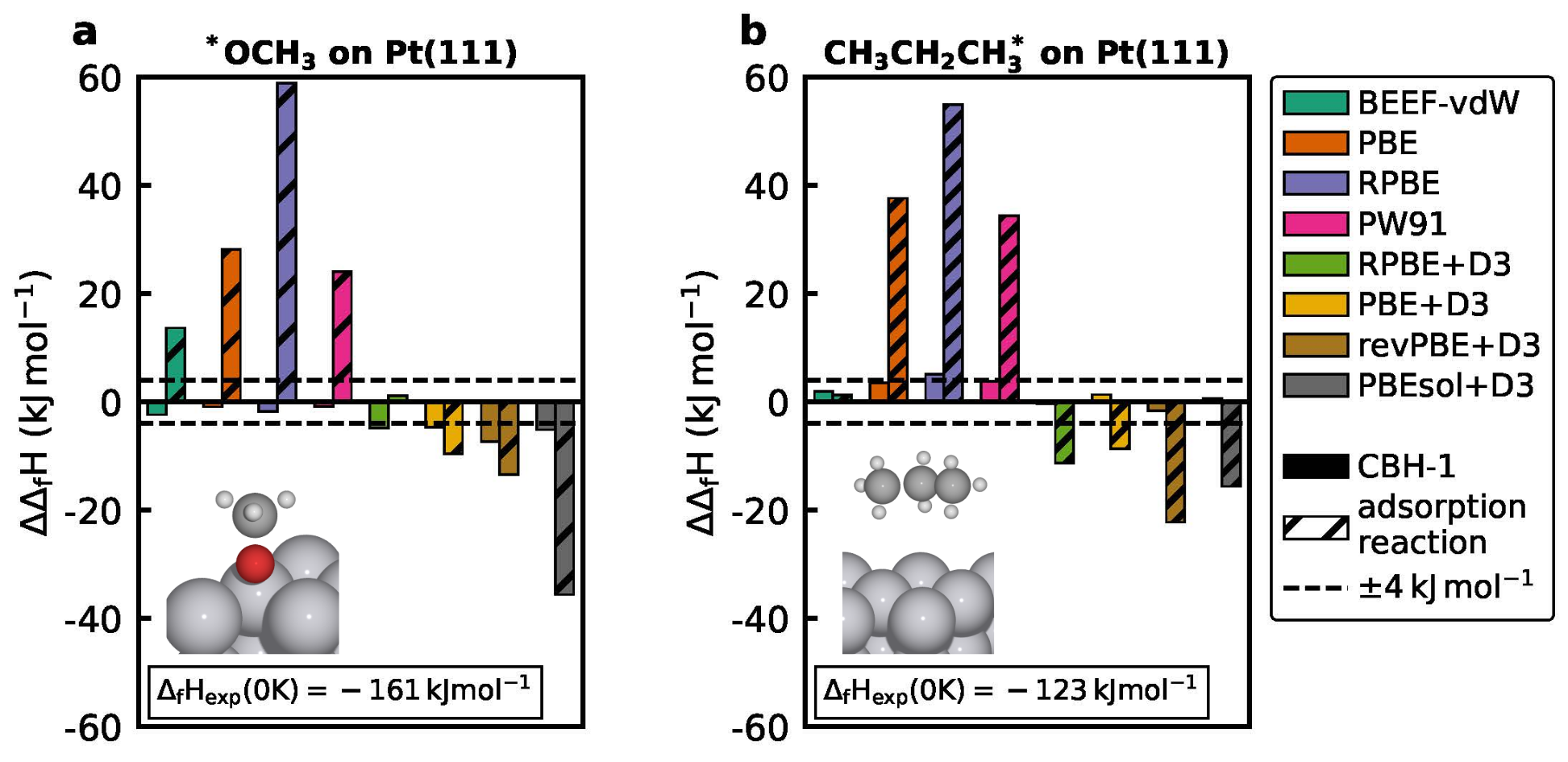The heat of formation (HoF) of adsorbates is an important parameter in microkinetic modeling since it quantifies the stability of intermediates on the catalyst surface. These values are usually derived from DFT and exhibit drastic differences compared to experimental values. Instead of using prohibitively expensive higher-level of theory methods, it is possible to use error cancellation techniques, well-established tools in the gas-phase community but hitherto unknown in catalysis. In this study, we propose a novel methodology to compute HoF of adsorbates more accurately by exploiting error cancellation.
The connectivity-based hierarchy (CBH) is an automated approach that decomposes a target species into fragments that conserve the bonding environment and hybridization of the target to various extents. These fragments are then combined in reference reactions that conserve e.g. bond-types (isodesmic reaction). Errors from DFT cancel out due to the configurational similarity and hybridization of the species on both sides of the reference reaction, resulting in a more accurate HoF.
The CBH method, originally developed for organic gas-phase molecules, is extended to handle the complex configurational space of adsorbates, including physisorbed and multidentate adsorbates. The CBH method is applied to a database of adsorbates on Pt(111) with up to 4 heavy atoms. Available experimental HoF for the isodesmic bond types are used as reference species, which links experiments with theory. Computed HoF from the CBH method with a range of DFT functionals are within chemical accuracy from experiments for CH3CH2CH3* and *OCH3, unlike conventional methods (see Figure). More accurate HoF of adsorbates is expected to have significant consequences on the elucidation of reaction mechanisms and multiscale modeling. The method is a breakthrough in creating a unified thermochemical network for adsorbates as it combines experiments with ab-initio results. Additionally, the developed methodology is generic and universally applicable to other metals, oxides, and zeolites.


